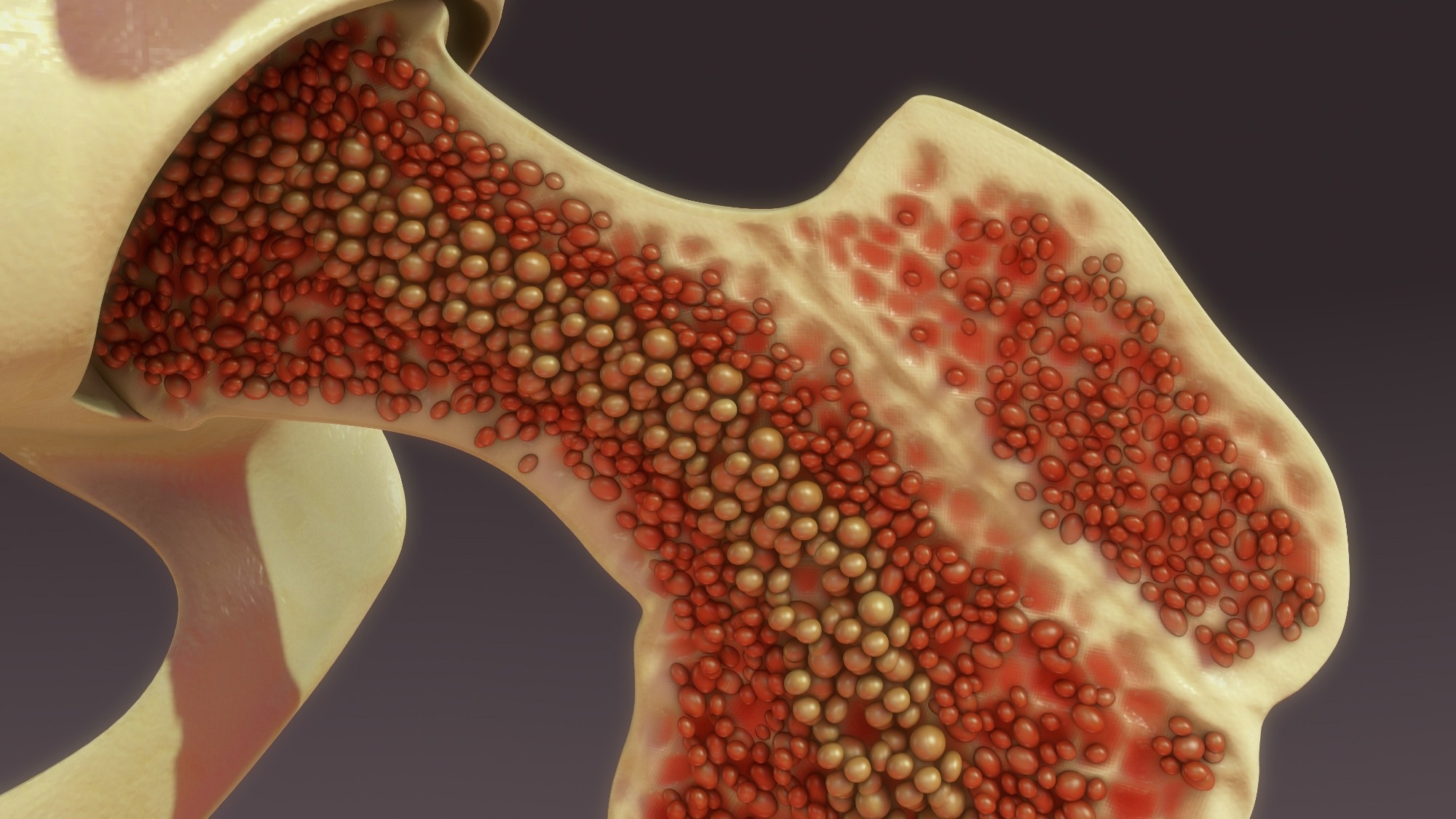If the body’s emergency hematopoiesis program activates, it signifies an alert state of the immune system and serves two functions: In comparison to “normal mode” hematopoiesis, the emergency program results in enhanced replacement of immune cells consumed during infections or inflammations. Furthermore, the emergency program activates the entire immune system, allowing infections to be cleared more effectively.
 Blood stem cells and progenitor cells in the bone marrow can switch from normal mode to emergency mode. This change is triggered by a newly discovered epigenetic switch. Image Credit: © Adobe Stock.
Blood stem cells and progenitor cells in the bone marrow can switch from normal mode to emergency mode. This change is triggered by a newly discovered epigenetic switch. Image Credit: © Adobe Stock.
The emergency program’s characteristics include an enhanced division rate of blood stem cells and a switch in the proportion of mature white blood cells in favor of myeloid cells (macrophages and granulocytes). Typically, the emergency response program is activated by pathogen molecular components or pro-inflammatory messenger compounds such as specific interferons.
But what about the blood stem and progenitor cells? Is the emergency program activated by a cellular switch? Researchers from the German Cancer Research Center (Deutsches Krebsforschungszentrum, DKFZ) headed by Nikolaus Dietlein and Hans-Reimer Rodewald targeted a specific epigenetic modification known as H2Bub1.
H2Bub1 is engaged in switching on genes that are triggered by interferon as a result of a viral infection and are vital for infection defense. The enzyme USP22 removes the modification that adheres to the DNA packing proteins, the histones.
Could the sought-after switch, which switches on the blood stem cell's emergency program, be H2Bub1 and USP22? Rodewald’s team explored this in mice whose blood stem cells had USP22 switched off genetically. The emergency hematopoiesis program, with all of its important elements, ran without any detectable infection or elevated interferon levels in these animals.
The genetically engineered mice were more resistant to infection with the bacteria Listeria monocytogenes than regular mice. Furthermore, neutrophil granulocytes, which are essential scavenger cells in their blood, were more effective at engulfing bacteria.
The genetic material in the blood cells of the gene-modified animals showed considerably more epigenetic H2Bub1 changes, as expected.
The increased H2Bub1 level seems to be the alarm button that puts the immune system on standby. In particular, this puts the innate immune defense, which is especially important during initial contact with a pathogen, into heightened defense alert.”
Nikolaus Dietlein, Study First Author, German Cancer Research Center
In normal animals, the alert is terminated by USP22, which eliminates the H2Bub1 alteration.
Currently available research indicates that H2Bub1 and USP22 also exist in human cells and operate similarly to their mouse counterparts there.
In mice, we were able to show that an epigenetic modification improves the defense against infection. However, how the loss of USP22 affects human hematopoietic stem and progenitor cells is still unknown and should now be investigated. Inhibition of USP22 by drugs could possibly one day help to improve the immune defense against pathogens. So far, however, this is currently still unproven and needs to be tested in further studies.”
Hans-Reimer Rodewald, German Cancer Research Center
Source:
Journal reference:
Dietlein, N., et al. (2022) Usp22 is an intracellular regulator of systemic emergency hematopoiesis. Science Immunology. doi.org/10.1126/sciimmunol.abq2061.